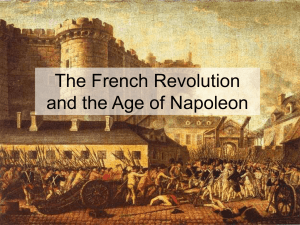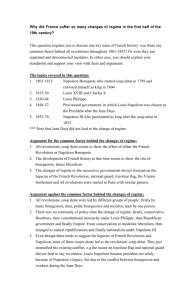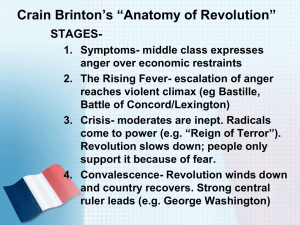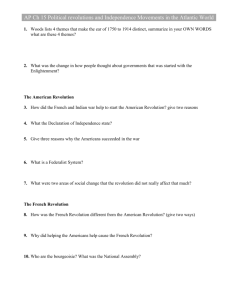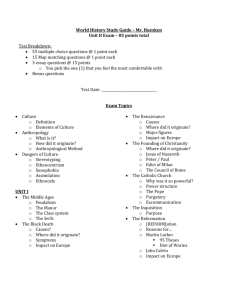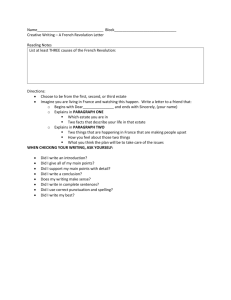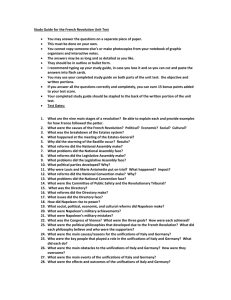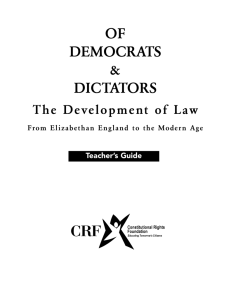The French Revolution Study Guide The French Revolution Begins
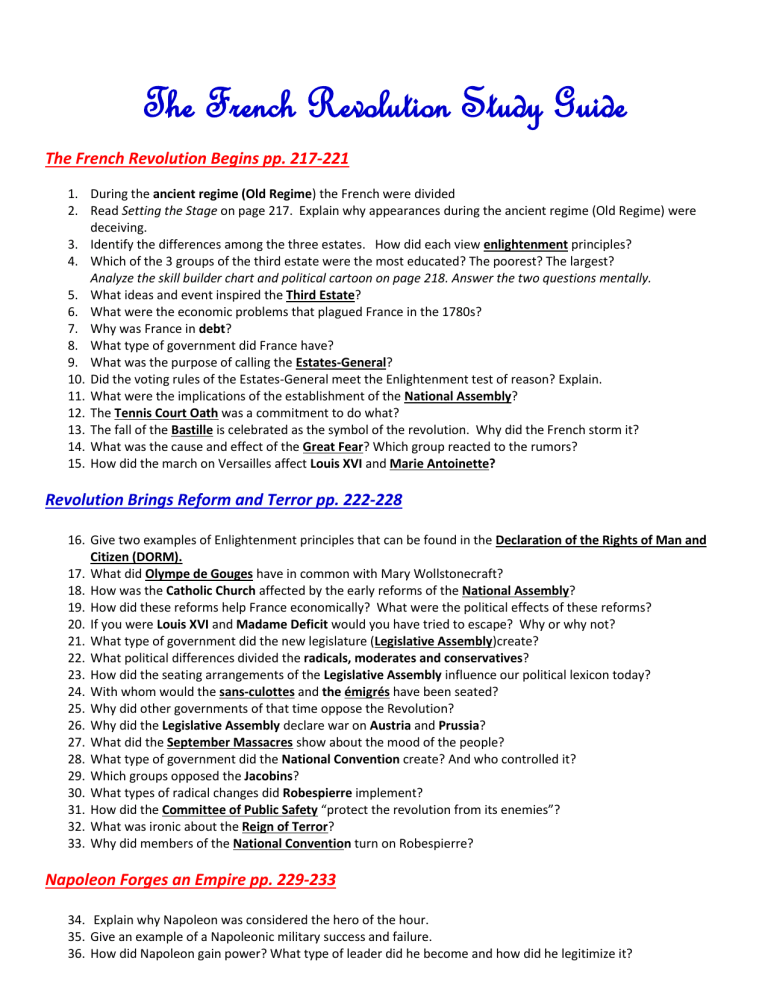
The French Revolution Study Guide
The French Revolution Begins pp. 217-221
1.
During the ancient regime (Old Regime) the French were divided
2.
Read Setting the Stage on page 217. Explain why appearances during the ancient regime (Old Regime) were deceiving.
3.
Identify the differences among the three estates. How did each view enlightenment principles?
4.
Which of the 3 groups of the third estate were the most educated? The poorest? The largest?
Analyze the skill builder chart and political cartoon on page 218. Answer the two questions mentally.
5.
What ideas and event inspired the Third Estate?
6.
What were the economic problems that plagued France in the 1780s?
7.
Why was France in debt?
8.
What type of government did France have?
9.
What was the purpose of calling the Estates-General?
10.
Did the voting rules of the Estates-General meet the Enlightenment test of reason? Explain.
11.
What were the implications of the establishment of the National Assembly?
12.
The Tennis Court Oath was a commitment to do what?
13.
The fall of the Bastille is celebrated as the symbol of the revolution. Why did the French storm it?
14.
What was the cause and effect of the Great Fear? Which group reacted to the rumors?
15.
How did the march on Versailles affect Louis XVI and Marie Antoinette?
Revolution Brings Reform and Terror pp. 222-228
16.
Give two examples of Enlightenment principles that can be found in the Declaration of the Rights of Man and
Citizen (DORM).
17.
What did Olympe de Gouges have in common with Mary Wollstonecraft?
18.
How was the Catholic Church affected by the early reforms of the National Assembly?
19.
How did these reforms help France economically? What were the political effects of these reforms?
20.
If you were Louis XVI and Madame Deficit would you have tried to escape? Why or why not?
21.
What type of government did the new legislature (Legislative Assembly)create?
22.
What political differences divided the radicals, moderates and conservatives?
23.
How did the seating arrangements of the Legislative Assembly influence our political lexicon today?
24.
With whom would the sans-culottes and the émigrés have been seated?
25.
Why did other governments of that time oppose the Revolution?
26.
Why did the Legislative Assembly declare war on Austria and Prussia?
27.
What did the September Massacres show about the mood of the people?
28.
What type of government did the National Convention create? And who controlled it?
29.
Which groups opposed the Jacobins?
30.
What types of radical changes did Robespierre implement?
31.
How did the Committee of Public Safety “protect the revolution from its enemies”?
32.
What was ironic about the Reign of Terror?
33.
Why did members of the National Convention turn on Robespierre?
Napoleon Forges an Empire pp. 229-233
34.
Explain why Napoleon was considered the hero of the hour.
35.
Give an example of a Napoleonic military success and failure.
36.
How did Napoleon gain power? What type of leader did he become and how did he legitimize it?
37.
What was France different in 1802?
38.
How would you evaluate Napoleon’s reforms in the economy? Education? Law? Church-state relations?
39.
Give two examples of how Napoleon betrayed the goals of the Revolution in France and elsewhere.
40.
Give three reasons why Napoleon agreed to the Louisiana Purchase.
Napoleon’s Empire Collapses pp. 234-237
The Congress of Vienna pp. 238-241
French Revolution Lexicon
Section One Section Two
Old regime
Ancien regime
Clergy
Bourgeoisie
Three Estates
Estates General
Deficit-spending
Louis XVI
Marie Antoinette
National Assembly
Tennis Court Oath
Bastille
DORMAC
Olympe de Gouges
Church Reforms
Legislative Assembly
Factions
Radicals
Moderates
Centrists
Conservatives
Emigres
Sans-culottes
Foreign Fears
Great Fear September Massacres
March on Versailles Nat’l Convention
Jacobins
Jean-Paul Marat
Georges Danton
Guillotine
Treason
Battle of Valmy
Robespierre
Directory
Section Three Section Four Section Five
Cannonade
Egypt
First consul
Coup d’etat
Plebiscite
Continental System Congress of Vienna
Peninsular War Metternich
Scorched-earth
Grand Army guerillas
Balance of Power
Containment
Lycee
Reforms
Concordat
Nap Code
Goya
Third of May
Leipzig
Elba
Waterloo Haiti
Toussaint L’Ouverture
Louisiana Purchase Hundred Days
St. Helena Battle of Austerlitz
Battle of Trafalgar
Horatio Nelson
Prussia
Austria
French Empire
